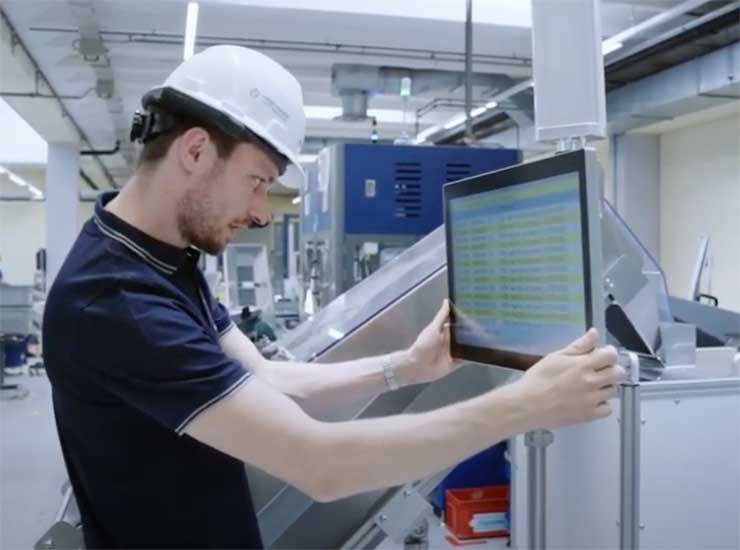-
Featured services
2026 Global AI Report: A Playbook for AI Leaders
Why AI strategy is your business strategy: The acceleration toward an AI-native state. Explore executive insights from AI leaders.
Access the playbook -
Services
View all services and productsLeverage our capabilities to accelerate your business transformation.
-
Services
Network Services
-
Services
Cloud
-
Services
Consulting
-
-
Services
Data and Artificial Intelligence
- AI and Intelligent Solutions
- Data/AI Strategy and Program
- Data Engineering and Platforms
- Data Governance and Management
- Data Visualization and Business Decision
- GenAI Consulting
- GenAI Platforms
- GenAI Industry Services
- GenAI Infrastructure Services
- GenAI Value Transformation
- View Data and Artificial Intelligence
-
Services
Infrastructure Solutions
-
Services
Global Data Centers
-
Services
CX and Digital Products
-
Services
Application Services
-
Services
Sustainability Services
-
Services
Digital Workplace
-
Services
Business Process Services
-
Services
Generative AI
-
Services
Cybersecurity
-
Services
Enterprise Application Platforms
![]()
Accelerate outcomes with agentic AI
Optimize workflows and get results with NTT DATA's Smart AI AgentTM Ecosystem
Create your roadmap -
-
-
Insights
Recent Insights
-
The Future of Networking in 2025 and Beyond
-
Using the cloud to cut costs needs the right approach
When organizations focus on transformation, a move to the cloud can deliver cost savings – but they often need expert advice to help them along their journey
-
Make zero trust security work for your organization
Make zero trust security work for your organization across hybrid work environments.
-
-
![]()
2026 Global AI Report: A Playbook for AI Leaders
Why AI strategy is your business strategy: The acceleration toward an AI-native state. Explore executive insights from AI leaders.
Access the playbook -
-
2026 Global AI Report: A Playbook for AI Leaders
Why AI strategy is your business strategy: The acceleration toward an AI-native state. Explore executive insights from AI leaders.
Access the playbook -
Discover how we accelerate your business transformation
-
About us
CLIENT STORIES
-
Liantis
Over time, Liantis – an established HR company in Belgium – had built up data islands and isolated solutions as part of their legacy system.
-
Randstad
We ensured that Randstad’s migration to Genesys Cloud CX had no impact on availability, ensuring an exceptional user experience for clients and talent.
-
-
CLIENT STORIES
-
Liantis
Over time, Liantis – an established HR company in Belgium – had built up data islands and isolated solutions as part of their legacy system.
-
Randstad
We ensured that Randstad’s migration to Genesys Cloud CX had no impact on availability, ensuring an exceptional user experience for clients and talent.
-
![]()
2026 Global AI Report: A Playbook for AI Leaders
Why AI strategy is your business strategy: The acceleration toward an AI-native state. Explore executive insights from AI leaders.
Access the playbook -
- Careers
Topics in this article
Private 5G, edge computing, digital twins, AI and automation: these have been some of the most talked about technology trends for automotive manufacturers and their suppliers at top industry fairs this year, including the Mobile World Congress (MWC) and Hannover Messe.
Here are some of our observations on how these technologies can improve connectivity for vehicle users and optimize the production process across the automotive value chain in 2023 and beyond.
The case for connectivity – on and off the road
Connectivity is becoming increasingly important in the automotive industry as original equipment manufacturers strive to create seamless integrations between cars, drivers and the environment.
Several innovations on display at MWC and Hannover Messe would help to improve connectivity for vehicle users. Unsurprisingly, 5G was front and center in this conversation.
5G technology offers faster data speeds and lower latency, which means drivers can access real-time information more quickly and reliably. On the road, this technology could have a profound impact on autonomous vehicles, which require a constant stream of data to make real-time decisions.
Although the widespread adoption of 5G on the road is perhaps a way off, exciting use cases are emerging off the road and in production facilities where private 5G networks can be established.
I moderated an automotive roundtable at MWC where we heard about a proof-of-concept project for automated valet parking. The infrastructure-based solution – codeveloped by NTT DATA, French automotive supplier Valeo and decision-making software provider Embotech – has few requirements on the vehicle side, as it guides the vehicle to a dedicated parking spot by using sensors, connectivity (such as private 5G) and off-board computing.
The initial pilot project focuses on ways of helping car manufacturers make their assembly lines more efficient by automatically guiding vehicles from one production station to another. The completed vehicles are then guided from the end of the assembly line to dedicated spots in large launch areas.
The outcome is a more efficient assembly line, with time and cost savings. Other potential use cases include depot management for fleet or rental-vehicle operators, and automated valet services for parking operators at retail outlets, airports and other large public spaces.
The rise and value of edge computing
Another significant connectivity trend discussed at these trade shows was the rise of edge computing, which enables true real-time automation and data processing at the edge of a network.
Combined, edge computing and 5G will pave the way for connected cars and lead to the development of new use cases that will have major implications for organizations along the entire automotive value chain.
McKinsey estimates the total value created by connected-car use cases will increase to more than USD 550 billion by 2030 from about USD 64 billion in 2020. In the same period, the portion of value created by 5G and edge computing in the overall automotive value chain is forecast to increase from 5% to 30%.
Optimizing the production process
In addition to improved connectivity for vehicle users, there was a strong focus at both trade shows on how organizations across the automotive value chain can use technology to optimize their production processes.
One prominent solution is digital twin technology, which uses data from sensors and other sources to create virtual representations of physical objects, such as cars.
These virtual models can then be used to lower the risk of errors, reduce waste and improve efficiency. For example, a digital twin of a car can be used to simulate the assembly process, allowing the manufacturer to address potential issues even before production begins.
The latest developments in augmented reality (AR) technology also hold great potential for optimizing automotive production processes. We were shown how AR can be used in training: by overlaying virtual objects onto the real world and allowing users to interact with them, workers or trainees can be given real-time information and guidance.
For example, a worker can use AR glasses to overlay a virtual blueprint onto a physical car, then get step-by-step instructions on how to assemble the car correctly. This technology can reduce the need for lengthy training processes and improve efficiency on the production line.
Topics in this article
See how Hirschmann Automotive uses AR to modernize maintenance
Training was another key topic discussed during our automotive roundtable, where BMW shared insights about the BMW Innovation Hub, developed with NTT, Intel and Microsoft, has supported the professional development of apprentices and students in their business.
At the Innovation Hub, located in the vocational training center at BMW’s Dingolfing plant in Germany, students are exposed to a range of IT-related subjects and can quickly specialize in those relevant to BMW as part of their vocational training or while working on a master’s thesis, for example.
With AI, the road is wide open
In recent months, new AI tools have dominated headlines. It was therefore no surprise that the topic also came up at Hannover Messe and MWC. There is plenty of scope for AI-based data analysis and machine learning to have a significant effect all along the automotive value chain.
A compelling current use case for AI is to monitor the performance of machines on a production line and identify potential issues before they become more significant and lead to catastrophic downtime. According to a Siemens report, the cost of a lost hour in the automotive sector is valued at up to USD 2 million. So, a solution that enables proactive maintenance of critical machinery has the potential for a rapid return on investment.
We have just started scratching the surface of AI, and we’ll soon see many new use cases covering all aspects of the automotive industry: design, smart production, maintenance and service, sophisticated analytics, and the end-to-end user or driver experience, all the way from presales to postsales.
The horizon, it seems, is endless.
Plenty of use cases exist for all the technologies mentioned in this article. If you would like to speak to one of our experts about how NTT can help your organization on your digital journey with our intelligent technology solutions, please get in touch.





